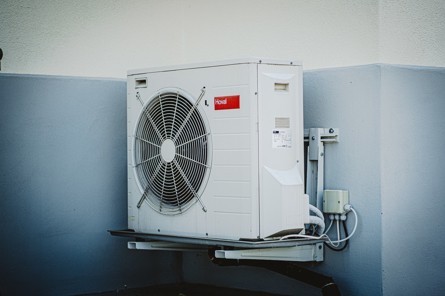As homeowners, we understand the importance of regular air conditioning maintenance. But, what you may not know is that your A/C system is made up of many components, and liquid lines are crucial to their function and effectiveness.
In this article, we will help you understand what an AC liquid line is and how it differs from other refrigerant lines, such as the suction line.
Understanding Your AC Refrigerant Lines
Air conditioners are complex machines, and they require a number of different components to work properly. One of those components is the refrigerant lines.
The larger line is called the suction line and is usually gas-charged and insulated (coated or with a foam material). It is called the return or vapor line because this larger line typically carries the cool refrigerant gas.
On the other hand, the warm liquid refrigerant flows through a smaller line that is uninsulated. This refrigerant line is called the liquid line and is responsible for moving the coolant fluid throughout the unit. They also carry heat away from the evaporator coil, where the cooling occurs.
As you might expect, the AC liquid line is a vital component of the air conditioner and heat pump system. If it fails, then the entire system could fail. That’s why it’s so important to keep it clean and free of debris.
A dirty liquid line can cause problems ranging from reduced efficiency to complete failure. So, if you notice any signs of damage or corrosion, you should contact a professional immediately.
Here are some common symptoms that indicate a problem with the liquid line:
-
A leak in the liquid line
-
Rusting around the connection points
-
Cracks in the copper tubing
-
Corrosion on the outer surface of the copper tubing
-
Discoloration of the copper tubing
If you notice any signs of a freezing AC liquid line in Spokane, Wa, contact Hurliman Heating right away. We’re available 24 hours a day, 7 days a week!
What is the Difference Between the Air Conditioner Liquid Line and the Suction Line?
Air conditioners work by compressing and cooling air. They do this by passing refrigerant through pipes inside the unit. These pipes (suction line and liquid line) are connected to the compressor, which forces the refrigerant through the lines.
As the refrigerant passes through the pipes, it absorbs heat. Once cooled, the refrigerant returns to the compressor, which begins the cycle again.
So what makes the two refrigerant lines different?
An AC liquid line is a pipe that connects the condenser coil to the expansion valve. The liquid line in an AC unit carries the liquid refrigerant from the condenser coil to the expansion valve. While The suction line is another pipe that runs from the expansion valve to the compressor. They carry the gaseous refrigerant from the expansion valve to the compressor.
What is the Liquid line on an AC and How Does it Work?
The Liquid line of an AC unit is a vital part of any air conditioning system. The pipe carries the coolant (liquid) throughout your AC unit, and If it fails, the entire system will fail.
When the air conditioner compressor turns on, it creates a vacuum inside the unit. This causes the refrigerant to turn into cool gas. The gas travels through the condenser coil, where it absorbs heat from the surrounding environment.
As the gas passes through the condenser coil, it changes back into a liquid. The liquid then flows through the liquid line to the expansion valve. The pressure drops so much at the expansion valve that the liquid becomes a super-cooled vapor.
The vapor then travels through the evaporator coils, absorbing heat from your home. Once the vapor returns to the compressor, it is compressed again and sent back to the condenser coil.
At the end of each cycle, the AC liquid line carries the condensed water back to the expansion valve. The expansion valve allows the liquid to expand, causing the temperature of the liquid to drop.
Once the liquid reaches the expansion tank, it is ready to be pumped back into the compressor. If there is no liquid line, the liquid would simply flow directly from the condenser coil to the expansion tank.
It is important to note that the air conditioner will not work correctly if the liquid line is frozen. So, you should always check the liquid line before calling a professional service provider.
What Causes Your Air Conditioner Lines To Freeze
The evaporator coil in an air conditioner contains refrigerant, which cools the air in your HVAC system. They are designed to absorb the heat from your environment, providing a cooling effect.
However, if the evaporator coil gets too cold, it affects the heat exchange process of your unit and produces ice on the coils. the ice builds up on the refrigerant lines and causes them to freeze
When liquid lines freeze, they become brittle and could leak easily. If left untreated, this could cause severe damage to your AC unit.
A frozen liquid line could lead to a number of problems, including:
-
Leaking refrigerant into the atmosphere
-
Compressor failure
-
Damage to the evaporator coil
-
Reduced cooling efficiency
-
Increased energy consumption
-
Potential fire risk
Here are some tips to avoid this issue
How to Prevent A Frozen Liquid Line
-
Ensure you have enough space around your AC unit to allow for proper airflow in the smaller uninsulated liquid line.
-
Check your liquid lines regularly and ensure they are free of debris and leaks
-
If there is any sign of leakage, you should immediately call a professional service provider
-
Use a dehumidifier to remove moisture from the air in your home.
-
Install a programmable thermostat to control the temperature in your home.
Hire An HVAC Expert Today
Refrigerants are complex, expensive, and can be dangerous. So fixing a refrigerant leak is not a recommended DIY job. Instead, it’s best you leave your troubleshooting and repairing leaks to HVAC professionals.
Have you noticed a change in your AC unit’s performance due to a frozen AC liquid line in Spokane, WA? Hurliman Heating can help you address these issues to avoid further damage to your entire air conditioning system.





